Tag Archives: Stories from our clients
Cultural Heritage and Community Responsibility: Insights from Barada Barna
Barada Barna Aboriginal Corporation provide specialist cultural heritage and support services to corporations and individuals, particularly in the resources sector within the QCD2016/007 Native Title Claim area.
Mipela and Barada Barna have worked together on various projects over the years.
Recently Graham Budby, Director at Barada Barna Aboriginal Corporation, visited the Mipela team and presented an overview of the Cultural Heritage Services his team delivers across more than 20 mining, gas, and exploration tenements on Barada Barna country. Their work ensures companies meet their obligations under the Cultural Heritage Act 2003. It was insightful for the Mipela team to hear how tools such as the X-Info Suite play a central role in supporting compliance and day-to-day operations.
In more detail, Mipela provide Barada Barna with a data management regime for cultural heritage that is technically sound and business based. X-Info Suite provides Barada Barna with risk reduction, improved coordination of field teams and cost savings, not just in cultural heritage management but also in any other project component or process that might depend on cultural heritage clearance.
Field workers can capture information, photos, videos and audio recordings using mobile data capture app, X-Info Aware. Any information captured in the field is immediately sent to a cloud hosted server and made available for consumption by all users of X-Info Suite. X-Info Aware also has an offline capability that captures the data point in time in remote areas with poor data connectivity, automatically caching the data back to the cloud hosted server as soon as the mobile device returns to mobile or wireless coverage. Using tools like X-Info Aware significantly expediates the notification and assessment of any cultural heritage finds.
“By moving to digital mapping and recording, it has made the process of doing our Cultural Heritage surveys and Cultural Heritage clearance work more streamlined and efficient,” said Graham Budby.
As with its other cultural heritage clients, Mipela looks forward to an ongoing successful relationship where continuous improvements can be made to these processes into the future.
Written by Karen Thompson

Multinet Gas Networks & X-Info Assurance suite: Mapping Out Another GE Smallworld success!
Multinet Gas Networks (MGN) is an active participant in Before You Dig Australia (BYDA), a national automated referral service that provides a single point of contact for accessing information about underground and above-ground utility infrastructure.
The BYDA interface plays a critical role in supporting MGN’s commitment to maintaining the integrity of its physical network. Furthermore, the BYDA system is formally recognised as a procedural control within MGN’s key documents that demonstrate the safe operation of the gas network and are submitted to regulatory authorities.
In 2022, the previous vendor advised that the legacy Dial Before You Dig interface used by MGN had reached end-of-life status, with only limited technical support available.
In response, MGN went to the market and evaluated alternative solutions.
Mipela had been providing this service through its offering. X-Info Assurance suite, for another AGIG business, Dampier Bunbury Pipeline (DBP), since 2007 and had successfully migrated their on premise instance of X-Info Assurance suite to Mipela’s cloud hosted solution in 2023. This provided additional assurance to the solution and bringing their enquiry processing up the rankings to 9 out of 1,031 Responders in Australia. MGN considered a range of factors and then made a strategic decision to transition to the Mipela Before You Dig automated response system, X-Info Assurance suite.
Being geospatial information system (GIS) agnostic, Mipela also bought to the table it’s experience with GE Smallworld. Having the experience and skills to be able to offer several integration options, Mipela were able to provide guidance to the client through the decision making process and provide a fit for purpose solution.
“Mipela have provided us a good technical solution for our BYDA automation and has helped us to minimise risk, enhance response time and optimise asset security for us as a critical infrastructure business,” said Prateek Kateelkar, Head of Engineering and Standards – Distribution at AGIG.
Written by Karen Thompson
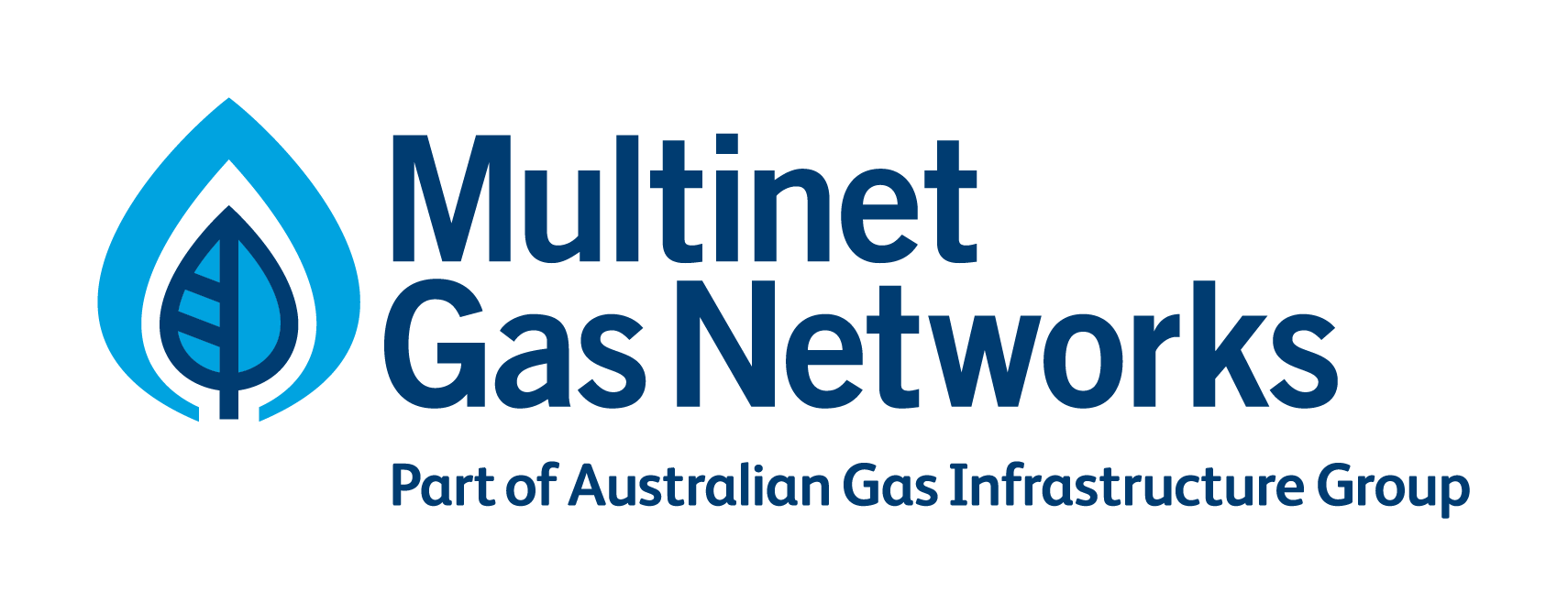
A Word from The Boss
Energy Transition, Align to Secure
Welcome to our Autumn newsletter for 2025!
In this edition, we are thrilled to share in New Zealand First Gas asset protection uplift client success story, Dampier to Bunbury Natural Gas Pipeline (DBNGP) mobile data management rollout for their day-to-day Lands Management Activities in Western Australia, articles on Navigating the Complexities of Renewables Projects in relation to Stakeholder Management, The Power of Clean Data, Security update, present another X-InFocus tech tip, and update of our teams’ Kamapim continuous improvement activities in connecting people with information.
It has been an nerve wrecking start to 2025 with the recent Tropical Cyclone Alfred in South-East Queensland and Northern New South Wales significantly disrupting the wider Community. It is amazing to acknowledge the incredible efforts of the various affected Power and Water Utilities and Councils in their restoration efforts. I am happy to report our Brisbane office has resumed normal operations, with some sizable projects successfully delivered.
Our Kamapim continuous improvement process carries on with this year’s focus on the theme of the three C’s (Communicate, Collaborate, Change). We’re also attending numerous APGA events across several states (so good to be able to see people in person) including our sustained sponsorship of the New Zealand Seminar, Golf Day and Dinner in New Plymouth since its inception in 2017. Our Services Delivery Manager, Adam Herbert and Ross Larson from APA jointly presenting at the Adelaide Pipeline Operators Group (POG) Seminar earlier this month. Our digital Transformation Stage – “Race to Align” – the Next Generation of X-Info suite, with our AWS Platform, continues positioning us with the most up-to date secure, resilient and efficient platform for our hosted Client’s solutions.
From all the team at Mipela GeoSolutions, stay safe!
Hayden McDonald
Founder and Managing Director

AGIG – Enhancing Landowner and Stakeholder Engagement
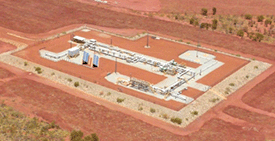 Recognising the critical importance of efficient landowner and stakeholder engagement for maintaining compliance, ensuring transparency, and improving decision-making, AGIG and its subsidiaries, including Dampier Bunbury Natural Gas Pipeline (DBNGP) in Western Australia, have proactively implemented several of Mipela’s cloud-hosted solutions to streamline their engagement and data management processes from the office to the field. These include:
Recognising the critical importance of efficient landowner and stakeholder engagement for maintaining compliance, ensuring transparency, and improving decision-making, AGIG and its subsidiaries, including Dampier Bunbury Natural Gas Pipeline (DBNGP) in Western Australia, have proactively implemented several of Mipela’s cloud-hosted solutions to streamline their engagement and data management processes from the office to the field. These include:
- X-Info Assurance suite automated BYD response system and Third Party Works
- X-Info Land management
- X-Info Safety Management Studies
- GIS.
Recently, Mipela rolled out its mobile data capture app, X-Info Aware, to simplify landowner and stakeholder engagement while ensuring the technical assurance of field-collected data. The initial focus was Landowner and Occupier Visits, providing instant access to critical information such as contact details, addresses, maps, notes, and history, including the ability to assign tasks, with automated email follow-up. By implementing the use of X-Info Aware, DBNGP have significantly improved the management of remote field tasks by allowing our field personnel to collect spatial and textual data on-site using their smartphones or iPads. This eliminates the need for outdated collection methods, saves time, and reduces the risk of errors. The app’s real-time capabilities enable efficient task assignment and operation, ensuring our field staff have the most current information to carry out their duties effectively. Data is automatically synchronised (when in comms range) both ways between the hosted service and the mobile device(s). Additionally, users leverage NearMap’s high-quality aerial imagery while using X-Info Aware, significantly enhancing geospatial accuracy and on-site decision-making. The improved speed of data processing, including georeferenced photographs in the field with markup capability, marks a substantial leap forward from previous manual and paper-based workflows.
As part of AGIG’s commitment to refining its operational efficiency, both DBNGP and Mipela are dedicated to exploring further enhancements to X-Info Aware, ensuring even greater usability and impact in the field. This ongoing collaboration demonstrates AGIG’s drive to continuously improve their landowner and stakeholder engagement processes.
Written by Karen Thompson

The Power of Real Time Data in the Energy and Infrastructure sector
In an industry where efficiency and timely decision-making can be critical, real-time data sharing has become a game-changer. The ability to capture and instantly transmit information from the field to the office is transforming how our clients operate.
Using Mipela’s mobile data capture app, X-Info Aware, workers can capture information on-site—whether it’s landowner liaison, vegetation management, asset audits or any other field task. With designated workflows and predefined tasks available on their mobile devices, users can easily collect and update information, take photos that are geotagged, and even use voice-to-text to capture site inspection or reporting details. The data is captured once and can be then used immediately once it hits the cloud hosted server by other users. Additional workflows and automated reporting can then utilise this data, as required.
One of the key advantages of X-Info Aware is task assignment. Users can delegate tasks to colleagues, ensuring smooth coordination across teams. Once the fieldwork is completed, all captured data is instantly sent to the relevant person’s X-Info Connect or X-Info WebConnect for review, assessment, or action. This seamless transition of information eliminates communication delays, enhances internal engagement, and strengthens collaboration with stakeholders.
 By reducing the lag between fieldwork and office-based decision-making, real-time data sharing leads to greater operational efficiency, improved compliance, and enhanced stakeholder engagement. In a sector where every second can count, embracing solutions like X-Info Aware is not just an advantage, it’s step forward in delivering timely outcomes to teams, shareholders, and the public.
By reducing the lag between fieldwork and office-based decision-making, real-time data sharing leads to greater operational efficiency, improved compliance, and enhanced stakeholder engagement. In a sector where every second can count, embracing solutions like X-Info Aware is not just an advantage, it’s step forward in delivering timely outcomes to teams, shareholders, and the public.
Written by Jacqueline Button
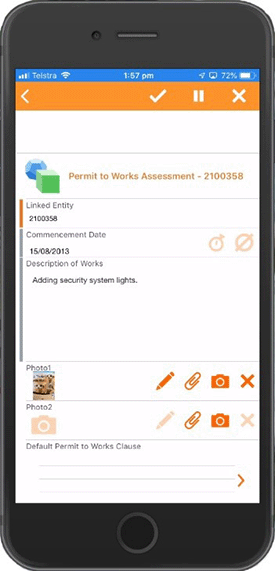
Kamapim Update: An Unforgettable start to the year with Korrin Barrett
Our opening Kamapim session for 2025, was the privilege of hearing from Korrin Barrett, a keynote speaker whose extraordinary story of survival and resilience left us all deeply moved and inspired. Speaking to our staff, Korrin took us on a journey through one of the most challenging experiences a person could face—one that tested her strength, determination, and ability to rebuild her life.
In 2012, Korrin, then a vibrant and healthy 33-year-old living in Queensland, was rushed to the hospital due to complications arising from the mismanagement of a medical condition. An undetected bowel perforation led to emergency surgery, followed by multiple organ failure and sepsis. Doctors placed her in an induced coma, giving her only a 5% chance of survival. Against all odds, nine days later, Korrin miraculously woke up to devastating news—both her legs and hands had to be amputated to save her life.
What followed was a long and arduous journey of more than 25 surgeries, months of rehabilitation, and the daunting process of adjusting to life as a quadruple amputee. However, Korrin refused to let her circumstances define her. With remarkable determination, she returned to work on one of Australia’s largest gas pipeline projects—finding purpose, self-worth, and a renewed sense of drive.
Now based in New Zealand, Korrin shares her story with audiences worldwide, using honesty, humor, and heart to inspire others. Her message is clear: resilience is within all of us, and no matter what challenges life throws our way, we have the power to rise above them.
Our Kamapim session with Korrin was nothing short of unforgettable. Her words resonated with every person in the room, reminding us of the strength of the human spirit. For those of us working in the energy and infrastructure sector, where resilience and adaptability are key, her story served as a powerful reminder of what is possible when we refuse to give up.
If you ever have the chance to hear Korrin Barrett speak, take it. She is a true testament to perseverance, and her story is one that will stay with us for years to come.
Written by Jacqueline Button

Assurance from a Telco’s perspective
 Over the past 12 years, Mipela has provided asset protection for one of Australia’s largest telecommunications companies’ underground assets with X-Info Assurance suite (previously called X-Info DBYD suite).
Over the past 12 years, Mipela has provided asset protection for one of Australia’s largest telecommunications companies’ underground assets with X-Info Assurance suite (previously called X-Info DBYD suite).
In the past eighteen months, this telco has moved to Mipela’s fully managed, cloud hosted environment and as a result have seen significant increase in system performance. In addition, the responsibility of maintaining the server environment is now also managed by Mipela, freeing up IT resources and capital investment in hardware.
Monthly reporting has demonstrated increases in response times, moving this telco to some of the fastest response times in the country.
Now that the telco has migrated to Mipela’s new AWS cloud hosted platform, the level of assurance Mipela is offering them has also significantly improved to strengthen the security and resilience of its critical infrastructure proactively against cyber security risks.
Written by Karen Thompson

Navigating the Complexities of Renewables Projects: A Smarter Approach to Stakeholder Management
Launching a new renewable energy project – or any major project – can feel like navigating an unpredictable journey. Regulatory landscapes shift, project constraints evolve, and new challenges emerge at every turn. Yet, one constant remains: successful projects hinge on effective stakeholder management.
Capturing stakeholder interactions early in the process and turning that data into actionable insights is critical. But here’s the challenge: most stakeholder management systems either overwhelm you with unnecessary features from the start or lack the flexibility to grow with your project. That’s where having the right tools – and the right approach – makes all the difference.
Start Simple, Scale Smart
In the early stages of a project, your priority is straightforward: gather as much stakeholder data as possible. You don’t need all the bells and whistles yet; you just need a solid foundation. A good stakeholder management system should offer the basics to get you started, with the flexibility to evolve as your project matures.
At each stage – whether you’re securing feasibility approvals, negotiating land agreements, or managing community engagement – a tailored approach to stakeholder data becomes essential. For example:
- During land negotiations, you’ll need robust tools for agreement, obligation and payment management
- Community engagement efforts will require efficient systems to track interactions, manage complaints, and facilitate grants or employment opportunities for impacted communities
- And then there’s the challenge of overlapping roles: John Smith, the landowner, might also lead a local community group. Your system needs to seamlessly organise and report on interactions based on these different roles.
Leveraging Proven Expertise
With nearly three decades of experience in the energy and infrastructure sectors, Mipela understands these challenges. X-Info Stakeholder Management solution is designed to support projects at every stage of their lifecycle. From capturing early-stage interactions to managing complex landowner and regulatory requirements, X-Info Stakeholder Management is designed to align with stakeholder management best practice, whilst still supporting your specific business requirements as your project matures throughout the lifecycle of your project or asset.
Built for the Future
As projects mature, so do their requirements. With X-Info Stakeholder Management, you can add functionality as your project evolves, ensuring your system stays aligned with your goals.
Whether you’re tackling environmental, social, and governance (ESG) responsibilities, negotiating land access contracts, or engaging with your local community, X-Info Stakeholder Management provides that extra level of assurance to your day to day activities, making it easier for you to focus on achieving your objectives.
Let us help you take the stress out of stakeholder management – so you can focus on delivering the projects that shape our energy future.
Written by Karen Thompson

Managing Landholder Relationships to Support Social License
Mipela’s Service Delivery Manager, Adam Herbert and APA Group’s Manager for Corridor Integrity, Operations Engineering & Planning, Ross Larsen, recently delivered a joint presentation titled Managing Landholder Relationships to Support Social License to the APGA’s Pipeline Operators Group in Adelaide.
Strong landholder relationships are one of many aspects which support an infrastructure operator’s social licence to operate. Achieving this relies on clear processes supported by robust and flexible systems. This enables energy and infrastructure asset owners and operators to treat our landholders as valued partners in their ongoing operations.
Ross focussed on APA Group’s massive task in managing its Social License to Operate, given the number of landholders, the number of details required, and changes over time. APA Group cannot rely on a “set and forget” mindset, but rather must rely on continuous review and improvement and updating of processes.
Adam explored how systems like Mipela’s suite of X-Info offerings, must support the business processes and be adaptable to support improvements and changing requirements over time, while providing for transparency and collaboration between the infrastructure operator and landholder.
The presentation highlighted the importance of strong landholder relationships in maintaining an infrastructure operator’s social license to operate and underscored the need for flexible and robust systems to ensure long-term, effective landholder engagement.
Written by Adam Herbert
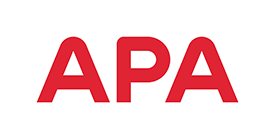
The Power of Clean Data
In the energy and infrastructure sectors, data is the backbone of decision-making, asset management, and regulatory compliance. However, the quality of data is often overlooked until problems arise. Dirty data—meaning outdated, incomplete, duplicate or inaccurate information—can have serious consequences for asset owners, project managers, and stakeholders.
The Hidden Costs of Dirty Data
Dirty data can cause inefficiencies, increase operational costs, and even pose safety risks.
Potential impacts:
- Inefficient Operations: Poor data quality leads to misallocation of resources, causing wasted time and money
- Loss of Stakeholder Trust: Inconsistent records can create confusion among landowners, contractors, and regulatory bodies, reducing confidence in infrastructure projects
- Regulatory Non-Compliance: Inaccurate data can lead to non-compliance with safety and environmental regulations, resulting in fines or project delays
- Safety Hazards: Incorrect data on underground and above-ground assets can increase the risk of damage, endangering workers and the public.
The Benefits of Clean Data
Investing in data accuracy ensures operational efficiency and regulatory compliance while reducing risks.
The upside is:
- Improved Efficiency: Accurate data reduces errors, streamlines workflows, and increases productivity
- Better Stakeholder Engagement: Transparent and accurate records improve relationships with landowners, regulators, and the public
- Enhanced Decision-Making: Reliable data enables asset owners to make informed decisions about project management, reporting, maintenance, upgrades, and expansions
- Stronger Risk Management: Up-to-date information ensures safer working conditions and helps prevent costly damage to infrastructure.
How to Maintain Clean Data
Keeping data accurate requires proactive management.
Consider:
- Standardised Data Entry: Implement uniform guidelines to prevent inconsistencies
- Ongoing Training: Educate employees on the importance of accurate data and proper management practices
- Regular Data Audits: Conduct routine checks to identify and correct errors.
The Future of Data in Energy and Infrastructure
As we all embrace digital transformation, the importance of clean data will only grow. AI-driven analytics, automation, and cloud-based platforms are making data management more efficient—but these technologies still rely on high-quality data to function effectively.
By prioritising clean data, asset owners can improve compliance, increase efficiency, and ensure the safety of their projects.
Dirty data is like polluted water—if you don’t clean it, everything downstream gets contaminated.
Written by Jacqueline Button
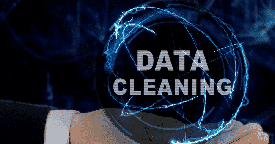
Popular Posts
A word from the BossAutomating the encroachment process
Kamapim end of year wrap-up
In Focus – tips and tricks
Product update
Security wrap-up for 2025
BYDA Utility Safety Conference
Staff update
Christmas trading hours
OLDER POSTS:
A Word from The Boss
Supporting Australia’s Renewable Energy Zones
Cultural Heritage and Community Responsibility: Insights from Barada Barna
Kamapim Update
Are Your Low Cost Digital Services Scrutinised?
InFocus
Product Update
Staff Update
A Word from The Boss
Security Update: AI in the Workplace – Hype, Hope and Hidden Risks
Multinet Gas Networks & X-Info Assurance suite: Mapping Out Another GE Smallworld success!
InFocus: Your Support Experience is Getting an Upgrade
Kamapim Update: Driving Continuous Improvement Across People, Product and Industry Insight
Product Update: X-Info Connect’s New Look!
Staff Update: Introducing Leo Liu
#projectMAD Team Update: 2025 Multiple Sclerosis (MS) Brissie to the Bay Fundraising Ride
A Word from The Boss
AGIG – Enhancing Landowner and Stakeholder Engagement
The Power of Real Time Data in the Energy and Infrastructure sector
Kamapim Update: An Unforgettable start to the year with Korrin Barrett
Assurance from a Telco’s perspective
Navigating the Complexities of Renewables Projects: A Smarter Approach to Stakeholder Management
Managing Landholder Relationships to Support Social License
The Power of Clean Data
Security update
A Word from The Boss
Gas Pipeline Victoria: Streamlining Right of Way Fault reporting
In Focus
GIS: Powering the Future of Energy with Mipela
Kamapim update
Staff Update: 21 Years of Being Awesome
Renewables Protection: Beyond Fences and Private Land
Streamlining Pipeline Patrol and Sightings Management
Product Update
Security update
Christmas trading hours
A Word from The Boss
Welcoming Inner West Council
In Focus: New Support Portal
Kamapim Update: Strategic Progress and Future Innovations
Staff Updates: Introducing…
Mipela Leads the Way in Sovereignty and Security
Christmas is coming…
Development Update: X-Info Connect version 8.0
Unlocking Innovation with AWS Serverless: A Proof of Concept
Epic Energy Powers Forward: Contributing to South Australia’s 2030 Renewable Energy Goals
Staying Ahead of Key Security Concerns for Asset Owners
A word from the Boss
Taking mobile data capture to another level
The importance of Multi-Factor Authentication
Product Update – X-Info Aware
Effective land management across the Gas Pipeline Victoria
It’s the stuff you don’t see that’s keeping you safe
Ampol joins our Client Community!
Ensuring Smoother User Management: Your Collaboration can Expedite the Process
SA Power Networks – Committed to Ensuring Security
Providing you that extra level of assurance
Do you have reporting fatigue?
Focus on the complex, the urgent and the sensitive
Making light work of Safety Management Studies
Safeguarding access and data integrity – the significance of using personal credentials to log onto software
Reporting Stakeholder Information to the Regulators
What integration with SPEAR means to Jemena
A truly epic project
The true power of data automation for Jemena
Tweed Shire Council using technology to deliver value to ratepayers
Using software to safely plant trees
How mapping retirement homes helps LendLease manage its 14,000 dwellings
Stakeholder management and a global wind energy company
ERA Water automates its asset protection with X-Info DBYD suite
ARTC implements X-Info DBYD suite as their automated response system
Beware the Spreadsheet
If you are breaking ground out in the field – we have you covered!
When community focus is key to the success of your project
How Gladstone Area Water Board saves time processing permits using X-Info DBYD suite
Mipela delivers more efficiencies to APA Group
Managing Cultural Heritage across Barada Barna land
Ever wondered how TransLink manage their Bus Stops?
Managing contaminated land compliance
Systematising pipeline risk management
Experience really counts when it comes to stakeholder management
City of Greater Dandenong implements DBYD automated response system
Stakeholder management – the answer is blowing in the wind
Flavour of the month – renewable energy projects
Automation in Remote Regions Delivers Multiple Benefits to Council
Powering through South Australia
There’s no watering down the importance of DBYD responses at Allwater
Tanami Gas Pipeline data integrity and materials traceability
Greater Shepparton City Council moves to X-Info DBYD suite
Putting your pipeline Safety Management Study information in one place
Making Lodging DBYDs Easier
Desktop GIS Analysis for Preliminary Route Selection
X-Info DBYD suite Perfect Fit for ATOM
First Gas Land Management
Managing Your Information
Managing Your Information – from beginning to end
The importance of data across the life of your assets
Mipela assist Luminous Energy in planning solar farms in Queensland
The Value of X-Info Plans Management – Zinfra
Real time data capture and reporting in remote field environment made possible with X-Info Aware
X-Info SMS suite – Safety Management Study
Property Information Service made easy
Your competitive advantage in field service management
Remote field task management and data capture providing results for real time consumption for Veolia
TGP optimises their field workforce with mobile data capture app
More than just maps… How do we add value to your GIS?
Automated back end processes provides Gladstone Area Water Board with improved responsiveness for issuing of permits
SEA Gas improves efficiency of land management
Perfect match: X-Info Connect and Maintenance Connection
News Archive
- Spring 2015
- Winter 2015
- Autumn 2016
- Winter 2016
- Spring 2016
- Summer 2016
- Winter 2017
- Spring 2017
- Summer 2017
- Autumn 2018
- Winter 2018
- Spring 2018
- Summer 2018
- Autumn 2019
- Winter 2019
- Spring 2019
- Summer 2019
- Autumn 2020
- Winter 2020
- Spring 2020
- Summer 2020
- Autumn 2021
- Winter 2021
- Spring 2021
- Summer 2021
- Autumn 2022
- Winter 2022
- Spring 2022
- Summer2022
- Autumn 2023
- Winter 2023
- Spring 2023
- Summer 2023
- Autumn 2024
- Winter 2024
- Spring 2024
- Summer 2024
- Autumn 2025
- Winter 2025
- Spring 2025
- Summer 2025
Tags
- Stories from our clients (56)
- A word from the boss (Hayden McDonald) (9)
- X-Info DBYD suite (9)
- Product news (9)
- X-Info Suite (9)
- X-Info Connect (8)
- X-Info Aware (6)
- Security updates (5)
- X-Info SMS suite (4)
- X-Info Plans Management (4)
- X-Info Stakeholder Management (4)
- GIS (3)
- Stakeholder management (2)
- Works Management module (2)
- X-Info Assurance suite (2)
- X-Info Service suite (1)
- X-Info WebConnect (1)
- X-Info Lands Management (1)
